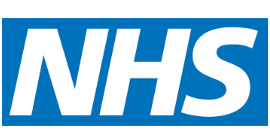Preventing prescribing errors
Please note – this is no longer an active Health Innovation Manchester project
Preventing prescribing errors was a national AHSN Network adoption and spread programme during 2018-2020. All AHSNs, including Health Innovation Manchester, delivered this programme in their region between April 2018- March 2020. Part of this work was to roll out the digital SMASH dashboard, which has been developed by the University of Manchester to identify patients who are linked to one or more medication indicators and sends a report to GPs and pharmacists to identify patients who would benefit from a review by a trained community pharmacist. Find out more about the SMASH dashboard.
Supporting pharmacists and GPs to identify patients at risk from their medications.
In a recent large-scale study in English general practices, prescribing errors were identified in 5% of prescription items, with one in 550 items containing a severe (potentially life threatening) error.
This equates to approximately 1.8 million serious prescribing errors in English general practices each year.
Further studies have shown hazardous prescribing in general practices to contribute to around 1 in 25 hospital admissions, with annual hospital admission costs in England for adverse drug events of £650 million (at 2013 prices).
The World Health Organisation has set a ‘Medication Without Harm’ (2017) Global Patient Safety Challenge aiming to reduce severe avoidable medication-related harm. The Francis Report stated that, ‘It is crucial that the patient is protected from avoidable harm’, and the Secretary of State for Health has set a goal of saving 6,000 lives in the NHS by reducing avoidable harm.
AHSNs are preventing prescribing errors by supporting the roll out of pharmacist-led information technology based interventions for medicines optimisation in primary care. These tools can use software to run through patients’ electronic health records in general practices to identify patients potentially at risk of hazardous prescribing.
Once identified, the healthcare professional can open the medical record for an at-risk patients in their own electronic health record system to decide on a possible course of action.




